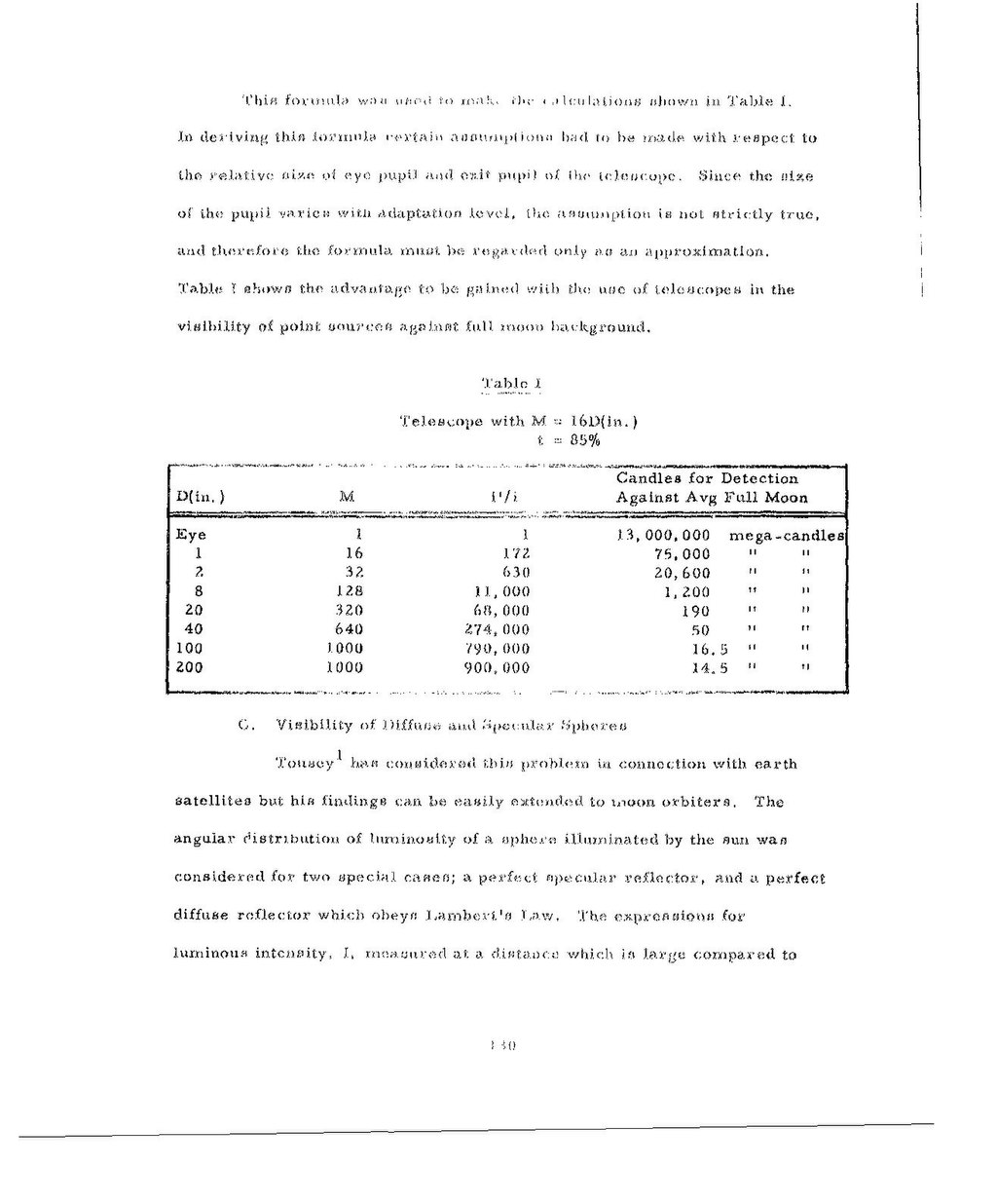This formula was used to make the calculations shown in Table I. In deriving this formula certain assumptions had to be made with respect to the relative size of eye pupil and exit pupil of the telescope. Since the size of the pupil varies with adaptation level, the assumption is not strictly true, and therefore the formula must be regarded only as an approximation. Table I shows the advantage to be gained with the use of telescopes in the visibility of point sources against full moon backgrounds.
| A table should appear at this position in the text. See Help:Table for formatting instructions. |
C. Visibility of Diffuse and Specular Spheres
Tousey1 has considered this problem in connection with earth satellites but his findings can be easily extended to moon orbiters. The angular distribution of luminosity of a sphere illuminated by the sun was considered for two special cases; a perfect specular reflector, and a perfect diffuse reflector which obeys Lambert's Law. The expressions for luminous intensity, I, measured at a distance which is large compared to
130
